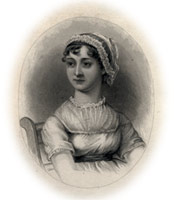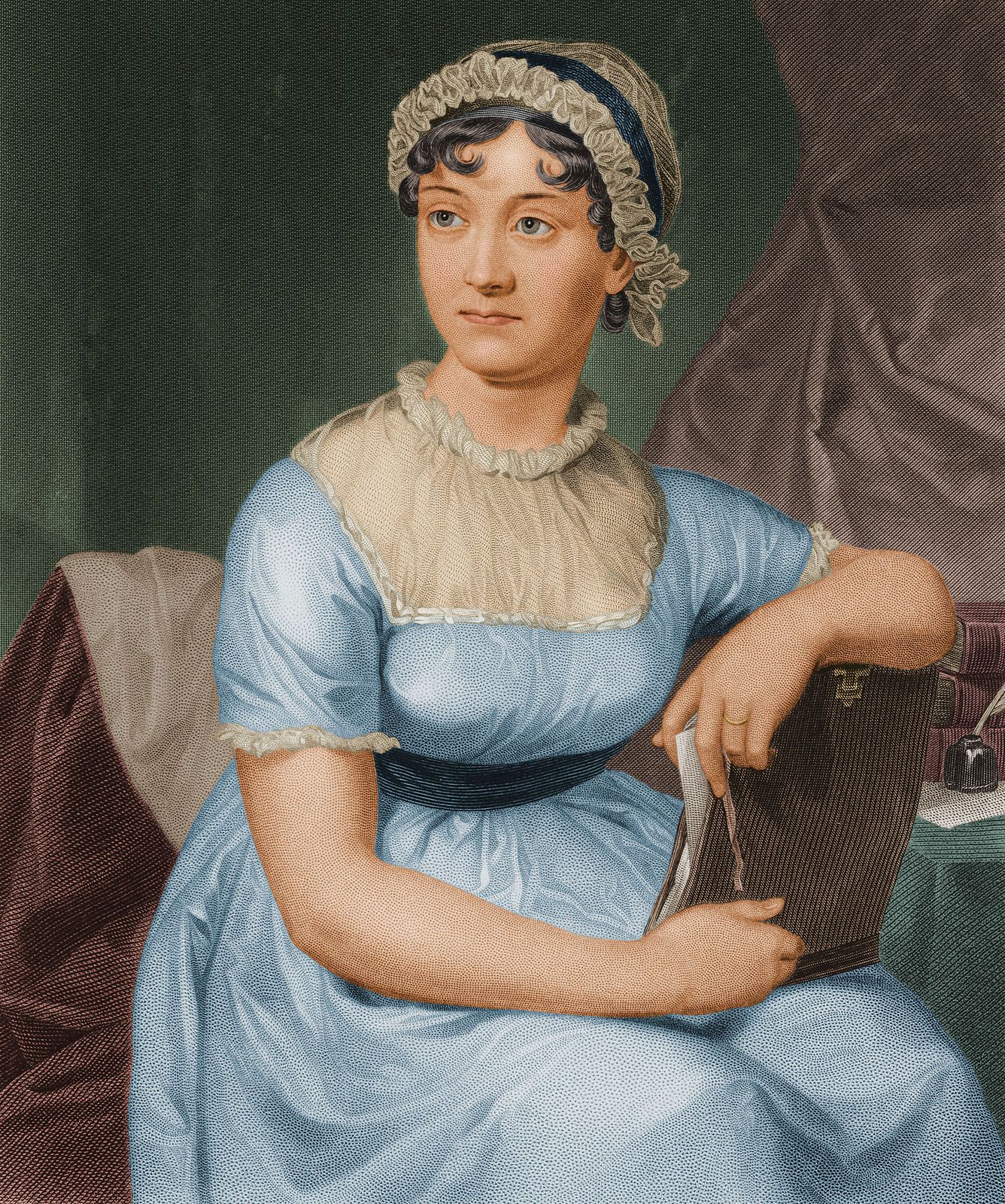Biography of Jane Austen
Jane Austen (1775-1817) was an English novelist renowned for her six major novels. Her work critiqued the British landed gentry at the end of the 18th century. Jane Austen remains a celebrated literary figure famous for her sharp wit, rich social commentary, and pioneering role in the development of the…
Jane Austen (1775-1817) was an English novelist renowned for her six major novels. Her work critiqued the British landed gentry at the end of the 18th century.
Jane Austen remains a celebrated literary figure famous for her sharp wit, rich social commentary, and pioneering role in the development of the English novel. Born on December 16, 1775, in Steventon, Hampshire, England, Austen lived much of her life in the stately homes of the British gentry, which later formed the backdrops of her novels.
Her keen observations of domestic life, romance, and societal norms culminated in timeless classics like “Pride and Prejudice,” “Sense and Sensibility,” and “Emma. ” Despite only publishing four novels in her lifetime, Austen’s posthumously released works, “Northanger Abbey” and “Persuasion,” solidified her legacy as a profound voice in literature. Though her writing was not widely celebrated until after her death, today Jane Austen’s novels are synonymous with early 19th-century English literature and are appreciated for their enduring insight into the human condition.
Early Life And Family Roots
Diving into the Early Life and Family Roots of the renowned novelist Jane Austen offers a glimpse into the formative years that shaped her literary genius. Born in the late 18th century, Austen’s childhood experiences and family environment significantly influenced her writing and themes. Let’s explore the beginnings that led to the creation of some of the most beloved classics in English literature.
The Austen Family
Jane Austen was born into an affectionate and intellectual family. Her parents, George and Cassandra Austen, nurtured a home rich with learning and culture. George was a rector, and Cassandra hailed from a high-standing family, which blended a strict work ethic with creativity. With eight children, their household was lively, and sibling bonds strong. Education was critical, as Jane and her sister Cassandra attended boarding schools before continuing their studies at home.
- Parents: George Austen (father), Cassandra Leigh Austen (mother)
- Siblings: 6 brothers (James, George, Edward, Henry, Francis, Charles) and 1 sister (Cassandra)
- Education: Emphasis on literature, languages, and music
Childhood In Steventon
The quaint village of Steventon in Hampshire was Jane Austen’s nurturing ground. Her father’s role at the local church meant community involvement was part of daily life. Surrounded by England’s rolling countryside, Jane’s early playground inspired her senses and emerged in her later works. The Austen homestead buzzed with intellectual energy, often hosting literary readings and discussions, crucial in shaping Jane’s aptitude for storytelling.
| Age | Life Event |
|---|---|
| 1775 | Born on December 16 in Steventon |
| 1783-1784 | Attended school in Oxford and Southampton |
| 1785-1786 | Studied at a boarding school in Reading |
| 1787 | Began writing poems, stories, and plays |

Credit: www.britannica.com
Education And Intellectual Formation
Exploring the early years of the esteemed novelist Jane Austen reveals a tapestry of educational experiences that shaped her intellect and narrative voice. The typical formal education for girls during her time was minimal, yet Austen’s learning journey was rich and influential.
Reading And Writing In Her Formative Years
Access to her father’s extensive library ignited Jane Austen’s passion for literature. Austen devoured books from an early age. Her family’s support for education and creativity provided a fertile ground for her growing talent. They encouraged her to read broadly, including histories, poems, and plays. Austen began writing in her teens, initially as playful sketches and stories now known as the “juvenilia.” These works reflect Austen’s early command of language and keen observation skills. Austen’s education occurred at home through reading rather than in schools.
Influence Of Georgian Era Literature
Literature during the Georgian era was diverse, ranging from romantic to satirical works. Austen was particularly influenced by the novels of sensibility, which were popular at the time. These novels underlined emotion and helped shape Austen’s approach to character development and narrative structure. She read works by writers like Samuel Richardson and Henry Fielding, whose novels offered complex characters and intricate plots that inspired her own writing. Austen’s engagement with the works of her contemporaries and predecessors allowed her to critique social norms with wit and precision in her own novels. Georgian literature was thus a significant pillar in Austen’s intellectual formation.
The Writer Emerges
As daisy chains turn to novels, we witness Jane Austen’s rise as a writer. Austen’s early life set the stage for her iconic works. Let’s delve into the dawn of her literary journey.
First Manuscripts
At the tender age of eleven, Austen began crafting stories. By her teens, she started to pen works that displayed her wit and social insight. With parchment as her canvas, young Austen sketched characters and tales that would captivate the hearts of readers for centuries. Parents and siblings marveled at her growing skill.
- ‘Lady Susan’: An exploration of society through a devious widow.
- ‘Elinor and Marianne’: Later became ‘Sense and Sensibility’.
- ‘First Impressions’: Evolved into the beloved ‘Pride and Prejudice’.
Juvenilia Works
These pieces, written between ages twelve to eighteen, show Austen playing with form and genre. They reflect a young mind’s curiosity, a playful spirit and a knack for satire. The ‘Juvenilia’ consists of short works, comic verses, and even plays.
| Title | Type | Features |
|---|---|---|
| The History of England | Parody History | Clever commentary, humor |
| Love and Freindship | Epistolary Novel | Misspellings, irony |
| The Beautiful Cassandra | Short Story | Vivid imagery, youthful prose |
Through these early writings, Austen honed her craft. Her juvenilia works serve as a precursor to her later novels. Each page penned brought her closer to her future as one of the world’s most beloved novelists.

Credit: www.chipublib.org
The Road To Publication
The journey of Jane Austen’s manuscripts from her quiet rural life to the bookshelves of the world is as fascinating as her novels. Walking down the road to publication, Austen faced challenges and took decisions that would pave the way for her enduring legacy. Let’s delve into the transformative phases that Jane Austen navigated to become one of literature’s most cherished writers.
Overcoming Rejection
Jane Austen knew the sting of rejection well. Her first major novel, ‘First Impressions’, which would later become the beloved ‘Pride and Prejudice’, was turned down by a publisher who didn’t even read it. This setback did not deter her. With unwavering perseverance, Austen continued to refine her craft, embracing the patience required for success.
The tables turned when ‘Sense and Sensibility’ found a home with a willing publisher. Published on a commission basis, Austen would only see profits after all the printing costs were covered. It was a leap of faith that paid off, validating her work to the world—and more importantly, to herself.
Anonymity And Authorship
In a time when female authors were not taken as seriously as their male counterparts, Jane Austen took the path of anonymity. Her books were initially published under the phrase “By a Lady”, ensuring the focus remained on the quality of the work rather than the gender of the author.
This choice reflected the societal norms and restrictions placed on women, but it also allowed Austen’s work to stand on its own merits. It wasn’t until after her death that Austen’s brother revealed her identity, finally giving her the credit she so richly deserved.
- ‘Sense and Sensibility’ – By a Lady
- ‘Pride and Prejudice’ – By the Author of Sense and Sensibility
By embracing the weight of anonymity, Jane Austen ensured her stories received impartial reception, allowing her wit, insight, and literary prowess to shine through.
Major Novels And Themes
Jane Austen, an iconic novelist, left a timeless mark with her work. She mastered the art of portraying complex characters and societal norms. Her novels often explore themes like love, reputation, and social class. In this section, we’ll look at Austen’s major novels and the common threads they weave.
Pride And Prejudice
‘Pride and Prejudice’ stands tall as Austen’s most famous work. This tale of Elizabeth Bennet and Mr. Darcy’s evolving relationship delves into pride, social status, and misunderstandings. It captures the nuances of the marriage market of the 19th century.
- Love versus social expectations
- Personal growth and moral lessons
- Class distinctions and irony
Sense And Sensibility
In ‘Sense and Sensibility’, the Dashwood sisters, Elinor and Marianne, navigate through a world that often pits sense against sensibility. The novel looks at the effects of secrets and the balance between emotion and reason on relationships.
| Elinor – Sense | Marianne – Sensibility |
|---|---|
| Practicality | Emotionality |
| Reason | Impulsiveness |
| Duty | Desire |
Other Noteworthy Works
Apart from her renowned novels, Austen’s other works also depict strong social insights and the complexity of human relationships. These works include:
- Mansfield Park – Examines morality, wealth, and education
- Emma – Chronicles misguided matchmaking and self-discovery
- Persuasion – Deals with second chances and enduring love
- Northanger Abbey – Satirizes gothic novels and celebrates the power of imagination
Life In Chawton
Jane Austen’s move to Chawton marked a period of profound creativity and personal contentment. Her life there enabled her to produce some of her most celebrated works.
Final Years Of Writing
The Chawton years were highly productive for Austen. Here, she revised her earlier manuscripts. She completed her latter novels: “Mansfield Park,” “Emma,” and “Persuasion.” The village of Chawton provided a peaceful backdrop for her writing endeavors.
- Revision of “Sense and Sensibility” and “Pride and Prejudice”
- Creation of “Mansfield Park” and “Emma”
- Introduction of “Persuasion” and “Northanger Abbey” to the world
Austen’s Daily Routine
Austen’s days in Chawton followed a steady rhythm that nurtured her writing. Mornings began with family duties, followed by writing before breakfast. Post breakfast, she would devote her time to crafting her novels at a small mahogany desk.
Afternoons were for walks in the country, which inspired her work. Her evenings involved reading, needlework, and enjoying the company of family. This routine provided a balance, offering both discipline and inspiration.
| Time of Day | Activity |
|---|---|
| Morning | Family chores, writing |
| Afternoon | Country walks, further writing or revising |
| Evening | Reading, needlework, family time |
The Austen Legacy
Jane Austen’s impact extends far beyond her lifetime, leaving a profound legacy. Her novels championed the novel form and continue to resonate with readers and writers today.
Posthumous Recognition
Following her death in 1817, Austen’s works gradually received the acclaim they deserved. Originally published anonymously, her name became inextricably linked with classic English literature. The Austen Legacy is highlighted by:
- Academic Study: Courses dedicated to her novels.
- Adaptations: Numerous film and TV reproductions.
- Museum Tributes: Austen’s home turned into a museum.
Influence On Modern Literature
Austen’s narrative style and character development set benchmarks for modern literature. Elements of her influence include:
| Element | Influence |
|---|---|
| Wit & Humor: | Her sharp satire inspires contemporary writers. |
| Characterization: | A model for crafting multi-dimensional characters. |
| Realism: | Pioneered realistic fiction, influencing narrative methods. |
Adaptations And Cultural Impact
Many know Jane Austen for her unforgettable novels, but her stories live beyond the pages. Her genius has leapt into films, TV shows, and classrooms worldwide. Adaptations of her work highlight her lasting cultural impact. They bring her wit and wisdom to new audiences every day.
Film And Television Adaptations
Jane Austen’s novels have found a second home on the silver screen. Bold directors and visionary screenwriters transformed her words into a feast for the eyes.
- Pride and Prejudice enchanted millions with Mr. Darcy’s brooding glances.
- Sense and Sensibility captured hearts with its tale of love and loss.
- Emma brought laughter with its clever matchmaking.
Mansfield Park and Persuasion also graced screens big and small.
Each film offers a unique take on Austen’s world. They inspire viewers with timeless lessons on love, society, and virtue.
Austen’s Presence In Education
Schools feature Austen’s works in literature courses. Austen’s expressive characters and intricate plots make her a favorite among teachers and students.
- Pride and Prejudice prompts discussions on social status and marriage.
- Emma fosters debates on growth and self-knowledge.
- Northanger Abbey offers a playful critique of gothic novels.
Class critiques and essays often center on Austen’s clever use of irony. In universities, her work supports gender studies and history lessons. Austen’s novels encourage critical thinking and analysis, skills crucial for young minds.
Personal Life And Relationships
Jane Austen, a literary icon, led a personal life often shrouded in mystery. Her relationships and daily experiences played a crucial role in her novels. A glimpse into her world reveals intriguing aspects of her personal life and relationships.
Romantic Endeavors
Jane Austen’s romantic life remains a subject of speculation. Despite her novels’ focus on love, her own love life was quite private. Documented occasions show suitors and rumored affairs. These experiences may have inspired her timeless works.
- A brief engagement to Harris Bigg-Wither, ended by Austen
- Alleged romance with Thomas Lefroy, though no marriage ensued
- A mysterious romance revealed in her letters, with an unidentified man
Correspondence And Personal Records
Austen’s words extend beyond novels; her letters reveal much about her life. Her sister, Cassandra, preserved these letters, offering priceless insight. Sadly, Cassandra destroyed many letters, leaving gaps in Austen’s personal history.
| Correspondent | Relationship | Key Topics |
|---|---|---|
| Cassandra Austen | Sister and confidante | Family matters, social events, writing progress |
| Francis Austen | Brother | Navy career, financial affairs |
| Other family members and friends | Extended network | Gossip, health, daily life |
Declining Health And Demise
The final years of Jane Austen’s life saw her battling with declining health, particularly in 1816. Despite this, she continued to write with the same wit and sharp observation as before. However, her physical condition deteriorated, and she eventually had to confront the severity of her illness.
Illness And Medical Treatment
Jane Austen’s health began to fade rapidly in 1816. She suffered from a mysterious illness that has since been theorized as Addison’s disease or possibly Hodgkin’s lymphoma. Attempts at medical treatment were limited during this time, reflecting the period’s medical knowledge.
- Limited access to effective medicines
- Consultations with physicians in Winchester and London
- Palliative care was the main form of treatment
Death And Memorials
Jane Austen passed away on July 18, 1817, in Winchester, at the age of 41. Her early demise left the literary world impoverished of a sharp and observant talent.
She was laid to rest at Winchester Cathedral. Her legacy has been celebrated with various memorials, including:
| Year | Memorial |
|---|---|
| 1870 | A memoir published by her nephew |
| 2007 | A bronze statue in Basingstoke |
| 2017 | Commemoration on the £10 note |
Readers continue to honor her life and work, finding new insights and inspirations in her novels, letters, and the modest number of personal documents she left behind.

Credit: www.biography.com
Conclusion
Reflecting on Jane Austen’s life and works offers timeless insights into human nature and society. Her novels, ripe with wit and wisdom, continue to captivate readers globally. As we celebrate her literary genius, Austen’s legacy endures, inspiring countless adaptations and discussions.
Cherishing her contributions enriches our appreciation of classic literature. Let Austen’s profound narratives influence generations to come.






